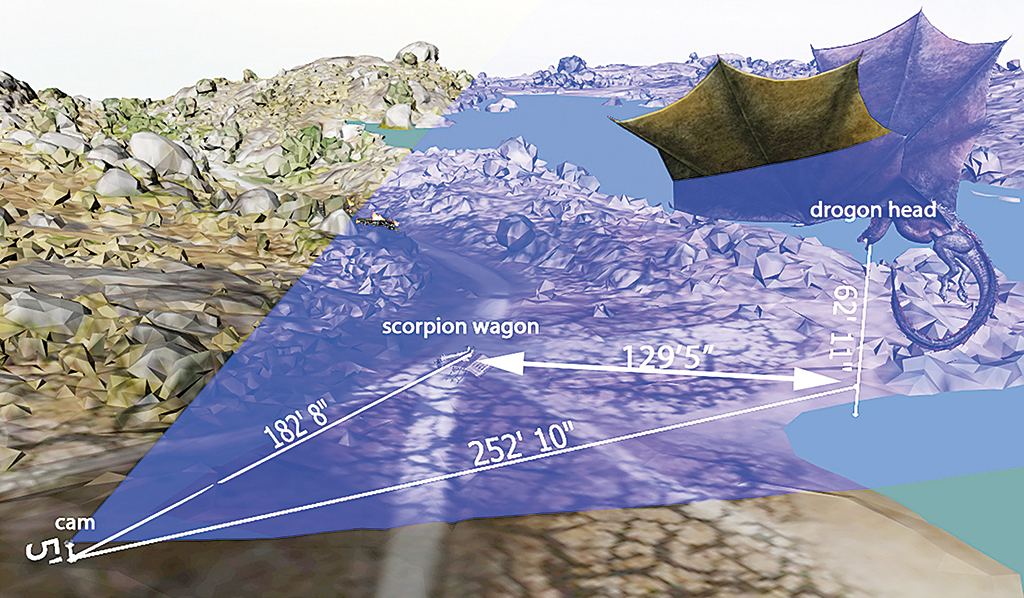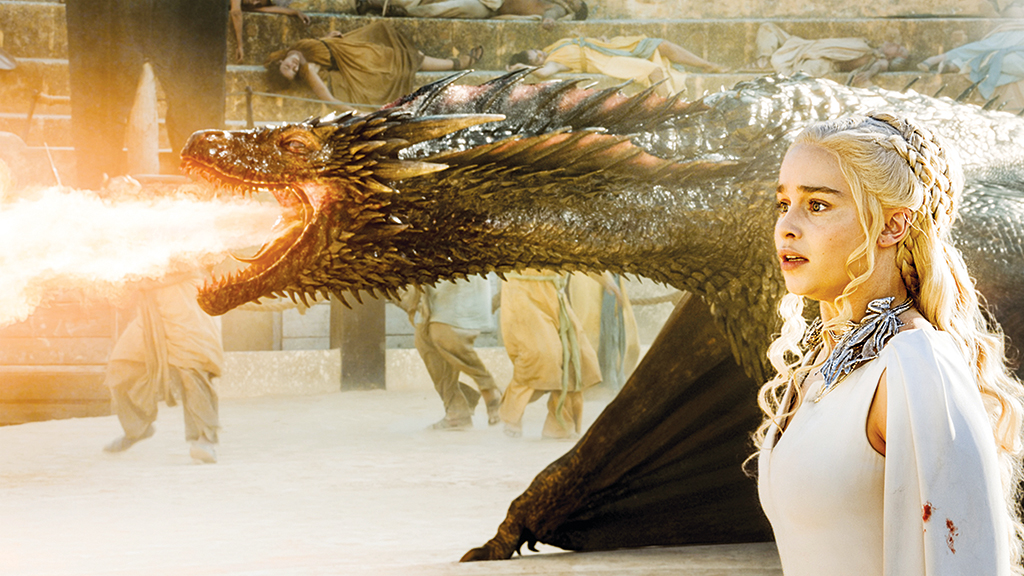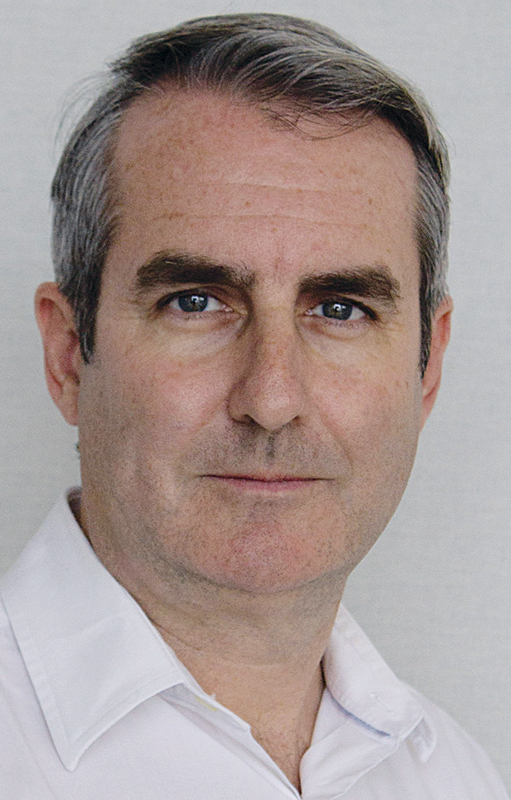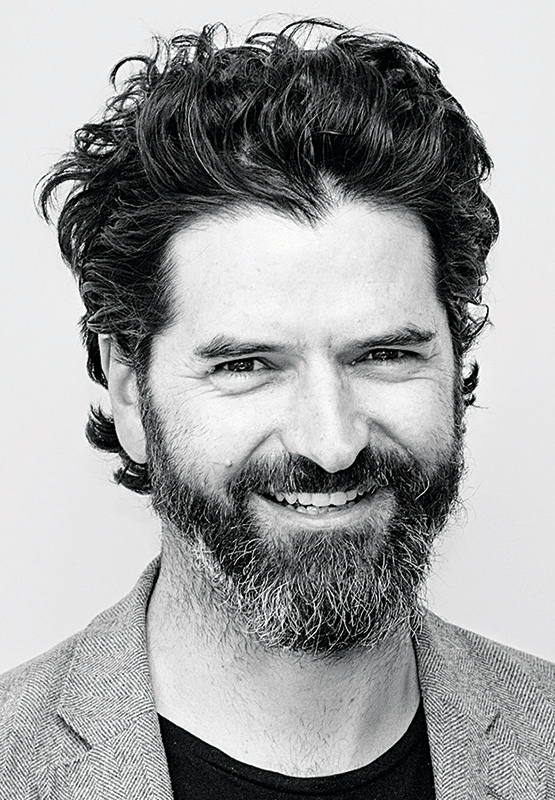By IAN FAILES

By IAN FAILES

Visual Effects Supervisor Joe Bauer has a very honest answer when asked what it was like working on the multiple award-winning and now stunningly completed HBO series, Game of Thrones.
“It was an ongoing panic,” admits Bauer. “You know the dreams you used to have, where you dreamed you were on the school bus and you looked down and you’re in your underwear? It felt like that.”
Similarly, Visual Effects Producer Steve Kullback – the other half of the crack VFX team that shepherded the groundbreaking work in the David Benioff and D.B. Weiss show – recalls the monumental task that lay before them each season, including this past final eighth season.
“When we look back on what’s been done,” states Kullback, “obviously we’re all enormously proud. It’s an amazing team of insane overachievers that have just pushed and pushed to deliver on a vision that Dan and David had.”





“[Showrunnners] Dan [Weiss] and David [Benioff] wanted to max out and go for the gusto. While we were not doing anything we hadn’t really done before, we were doing so much of it, and so much of it is so complex that it was really frightening. Ultimately their support and participation has been the linchpin to us being able to do our jobs, because they give us an enormous amount of creative freedom, and the freedom to execute it in the way that we think is the right way to do it.”
—Steve Kullback, Visual Effects Producer





There’s no shortage right now of feature-film-quality visual effects work in the world of television. So what do Kullback and Bauer think lies at the success of Game of Thrones’ visual effects, both in terms of accolades (including multiple Emmys and VES awards) and helping to bring large audiences to the show?
One aspect Kullback highlights is their own take on shooting everything that can possibly be shot photographically. “It gives us not only an insane number of elements that go into our shots,” he says, “but also insane reference to inform those parts that have to be CG. I think that has probably single-handedly upped the bar, and it’s something we hadn’t been accustomed to even striving for before, in television and a lot of times in features, too.”
Indeed, this final season’s visual effects were certainly ‘upped,’ with Bauer suggesting that “any one of our complex shots would have been the highlight of any previous season. Most of our shots were complex shots this year, with more than two and sometimes eight layers of photographed elements.
“The reason we went so photography-heavy,” adds Bauer, “was the concern of the post-production time, in that with a feature you’ll have much more time to develop your assets and the sim work – all the stuff that you would otherwise shoot. We didn’t have the time to do that, and I wanted to go into post with photography that covered all the bases. Then the CG was all about holding it together. We’ve stuck to that because we really liked the way it looks. The thing is, as the shots get more complex, you end up needing to shoot more elements if you’re going to follow the same philosophy.”
As the VFX work did become more complex season over season, Kullback (who joined the show in Season 2) and Bauer (who started in Season 3), found themselves investing more time in the planning stages. They also learned they could delegate more via a large team of virtual and previs supervisors, and an army of on-set effects supervisors working with different units, including motion control. “Once upon a time we’d be the people running the little dragon heads on sticks around the set,” says Bauer.
The duo says their approach to the visual effects work took a major leap in Season 3 for a moment in which Daenerys orders one of her dragons to kill the slaver Kraznys. “It is the first time that a dragon roasted somebody on camera,” says Bauer. “And that was the first time we made the argument to production to set up an on-set fire stunt rather than doing CG fire.”
Other game-changing VFX moments identified by Bauer and Kullback included the fighting pit sequence in Season 5, where Daenerys climbs onto the back of her dragon, and other sequences involving Wun Wun the giant in battle that had to be shot motion control (“These were the early steps that lead us to the rather intensive machine of techvis and preparation and motion control,” says Kullback).
That close reliance on planning and on photographed elements was often also in concert with the special and practical effects teams on the show, so much so that a very large miniature was built and exploded for the final season. “I would dare say that we’re the only production that would have supported that approach for this event,” argues Bauer. “If practical effects teams have ever been concerned that their jobs were going to be diminished with CG they should have worked on Game of Thrones because our guys were taxed to the max. Special Effects Supervisor Sam Conway and his team were hand in glove through almost all of this.”
Over the years, Game of Thrones’ visual effects workforce has been spread out over several countries. But before shots even got into post-production, another of the show’s point of differences was the close involvement of virtual supervisors on set from The Third Floor, which tackled previs, techvis and virtual production.
“We had so much material that needed to be shot and produced in a relatively short period of time that there was no other way to do this than to be so well planned out,” says Kullback. “So that when you’re walking on set you know exactly where the camera’s going to go, exactly where the hundred tiles of Unsullied are going to need to be and moved around for a particular shot.”
Bauer says that his experience on other productions was that film crews were traditionally not so accepting of previs or techvis. But the visual effects supervisor adds that, on Game of Thrones, “the work has gotten so complicated, and the timeframe for achieving it was so tight, that the camera and grip crews would seek out the information from us. They’d ask, ‘Do you have a diagram for where the dolly track goes in relation to the greenscreen and where the greenscreen goes?’ Everyone understood the advantage of having this stuff worked out ahead of time instead of trying to solve it on the day, which would have been disastrous.”
That kind of planning came in particularly handy during the filming of Season 5’s fighting pit scene, which took place in Osuna, Spain. The final imagery required a dragon breathing fire within the pit directly onto adversaries. The shots were planned as dual motion-control scenes, one rig for filming and one rig holding an actual flame thrower. Recalls Kullback: “Our director, David Nutter, you could see his eyes roll back in his head because he had done some motion control previously and just remembered it being cumbersome and problematic and finicky, and we were having two setups! But because we had planned it out in a rather elaborate scheme and had a very detailed playbook, thankfully – because it was the most frightening day of my life – it went off without a hitch.”

“Any one of our complex shots would have been the highlight of any previous season. Most of our shots were complex shots this year, with more than two and sometimes eight layers of photographed elements.”
—Joe Bauer, Visual Effects Supervisor




“That morning,” continues Bauer, “I remember I woke up, looked in the mirror and my top lip had swollen up as a manifestation of how nervous I was, because people’s lives were at stake. It really was thanks to the stunt team, too, which is overseen by Rowley Irlam. They’re top notch and obviously no one got hurt and everyone is professional.”
The presence of the virtual supervisors became particularly important for the even more heightened action seen in Season 8, when simulcam techniques became a major part of the mix. “Now we could show the CG character performing in the set for shots where we needed to do a fairly complicated move,” says Kullback.

Having navigated the brutal results of this final season – which Bauer describes as “quadruple” the work of the largest sequences of previous seasons, such as the ‘Battle of the Bastards’ or ‘Hardhome’ – the core visual effects team is particularly proud of the fact that the show’s creators trusted them with going big.
“Dan and David wanted to max out and go for the gusto,” says Kullback. “While we were not doing anything we hadn’t really done before, we were doing so much of it, and so much of it is so complex that it was really frightening. Ultimately, their support and participation has been the linchpin to us being able to do our jobs, because they give us an enormous amount of creative freedom, and the freedom to execute it in the way that we think is the right way to do it.”


VFX Voice asked several key contributors to Game of Thrones to reflect on their involvement in the groundbreaking visual effects for the show.

“The Third Floor has had a unique scope of work as an ‘information hub’ on Game of Thrones, where we’ve synthesized information from multiple departments, built it into the previs and then used that to help develop essential on-set data and shooting solutions.”
—Michelle Blok, Previs Supervisor, The Third Floor

“I’m very grateful that we could raise and accompany the dragons for such a long time. From babies to grown-ups we could go on adventures with them – from learning to blast fire, flying, hunting, diving, and fighting to intimate moments. Being on this fantastic journey with Joe and Steve over all these years – a rarity in our current industry – makes us very proud!”
—Sven Martin, Visual Effects Supervisor, Pixomondo

“The evolution of Daenerys riding Drogon was the most interesting to me. In Season 6, we began to pre-animate those riding sequences in the ‘Meereen’ attack. That gave us some pretty dynamic flying shots that were converted to moco camera moves. They were played back on set when filming Emilia Clarke sitting on a simple buck that approximated Drogon’s back. In Season 7, we went a step further in the Ice Lake.”
—Derek Spears, Visual Effects Supervisor, Rhythm & Hues

“The most gratifying aspect of Game of Thrones was the personal and professional satisfaction achieved by the team when they overcame creative and technical hurdles. For us, it’s built a sense of camaraderie and pride and cemented friendships that will last far beyond when the final episode fades to black.”
—Thomas Schelesny, Visual Effects Supervisor, Image Engine

“Not only was it a thrill to work on a show of that caliber, but the ‘Battle of the Bastards’ has become one of the most iconic sequences of the whole series. It was hugely challenging as our CG characters had to blend seamlessly into the plate photography, oftentimes very close to camera and very inspectable.”
—Glenn Melenhorst, Visual Effects Supervisor, Iloura

“Over the years the show has played a big part of mine and SSVFX’s life delivering over 1,600 shots. The passion and enthusiasm from HBO, the showrunners and all departments from day one have been the intoxicating key factors that, in my opinion, have led to the super successful series it has become.”
—Ed Bruce, Visual Effects Supervisor, SSVFX

“It was a fantastic experience to work for Seasons 2 to 7 on Game of Thrones and being part of virtually re-inventing VFX for TV. Steve, Joe and Rainer (for Season 2) always pushed the limits of what used to be possible for TV and they were able to set new standards for the whole industry.”
—Heiko Burkardsmaier, VFX Executive Producer/Head of Business & Legal Affairs, Mackevision

“Working on a show of this scale and recognition is an amazing experience because you feel you become a part of the entire movement that the audience is so excited about. Much of our work revolved around Winterfell, which makes it all the more exciting for us, since we got to be a part of realizing one of the show’s most significant locations.”
—Seth Hill, Visual Effects Supervisor, Atomic Fiction/Method Studios

“Making the journey from the claustrophobic hand-to-hand fighting scenes in ‘Hardhome’ to the vast mayhem in the frozen lake scenes, with its army of thousands of wights, extensive dragon destruction simulations, full CG scenic environments, and the final ice dragon climax, pushed us beyond our limits to grow both as a company and also personally as professionals.”
—David Ramos, Visual Effects Supervisor, El Ranchito

“We knew that there was nothing like it on television – and there still isn’t. Game of Thrones was the first series to aim for the same quality of visual effects as feature films, but on an episodic schedule. The show formed Rodeo FX as a company, and it is a defining project for many people here.”
—Matthew Rouleau, Visual Effects Supervisor, Rodeo FX

“When I was asked if I’d like to bring a large, fiery, zombie polar bear to life, it must have been a good half-second before I said ‘Yes.’ When the episode aired, my phone went crazy. I have never worked on a show that has had a reaction like that, and I apparently earned a huge amount of street cred with nephews and nieces.”
—Wayne Stables, Visual Effects Supervisor, Weta Digital

“Contributing to Game of Thrones is truly a rare experience that I will never forget. Not only are you on a mission to delight audiences and show them something they’ve never seen before, but you are also entering a continuum of storytelling and filmmaking that needs to be studied and honored.”
—Ryan Tudhope, Visual Effects Supervisor, Atomic Fiction/Method Studios

“Daenerys, Drogon and the Dothraki battling the Lannister army was probably the most hotly-anticipated sequence I’ve ever had the pleasure – and pressure – of working on. This series redefines what is possible in VFX for the small screen with every new season.”
—Josh Simmonds, Visual Effects Supervisor, Iloura